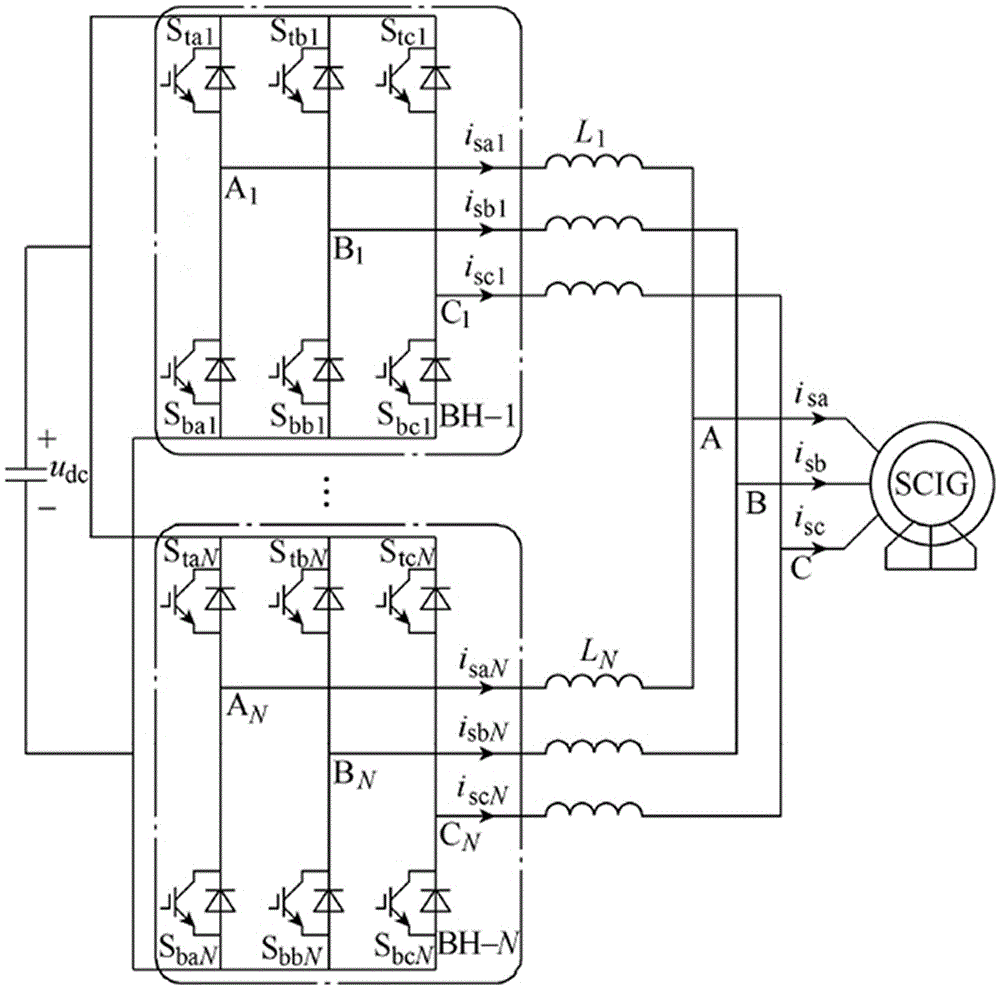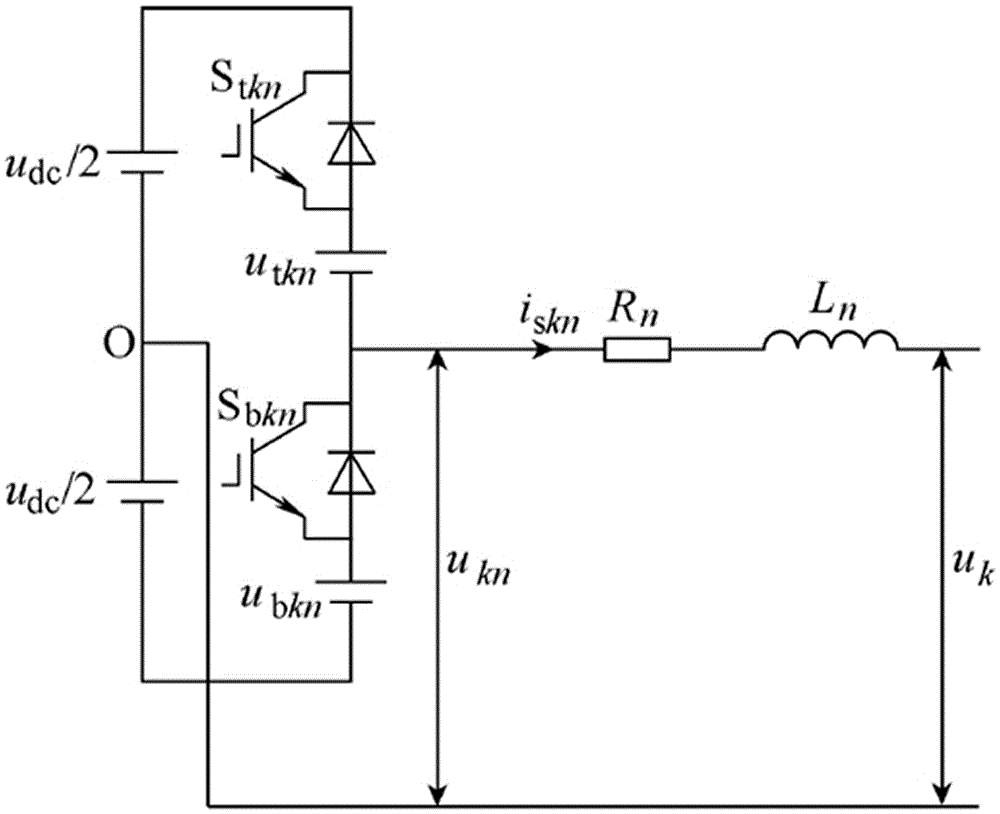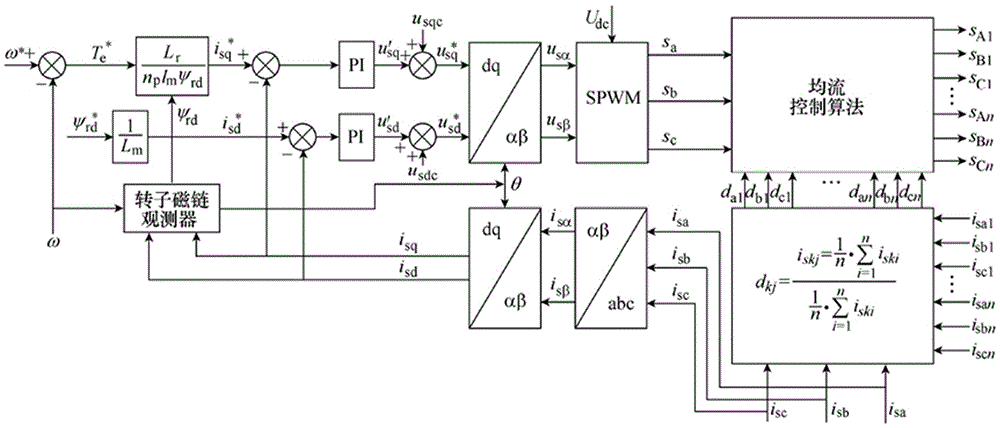Multi-inverter parallel current-sharing control method
A multi-inverter and current control technology, applied in the direction of converting AC power input to DC power output, output power conversion devices, electrical components, etc., to achieve the effects of suppressing circulation problems, solving circulation problems, and solving uneven current problems
- Summary
- Abstract
- Description
- Claims
- Application Information
AI Technical Summary
Problems solved by technology
Method used
Image
Examples
Embodiment Construction
[0017] specific implementation plan
[0018] The system consists of N three-phase IGBT fully-controlled bridges (BH-1,..., BH-N) with the same structure. The DC terminals of all N three-phase fully-controlled bridges are connected together. The three-phase fully-controlled bridges The output ends are connected to the three-phase input stator end of the asynchronous motor through current sharing reactors L1,..., LN. The control objectives of multi-parallel inverters are to control the total output current balance of the inverters, to suppress the circulating current among the sub-inverters, and to suppress the non-uniformity of the output current of each sub-inverter.
[0019] figure 2 , is the equivalent schematic diagram of the output of the k-phase bridge arm of the nth parallel inverter, in the figure is the turn-on voltage drop of the upper switch IGBT; For the turn-on voltage drop of the down-side IGBT, set the virtual midpoint of the bus capacitor as the reference ...
PUM
 Login to View More
Login to View More Abstract
Description
Claims
Application Information
 Login to View More
Login to View More - R&D
- Intellectual Property
- Life Sciences
- Materials
- Tech Scout
- Unparalleled Data Quality
- Higher Quality Content
- 60% Fewer Hallucinations
Browse by: Latest US Patents, China's latest patents, Technical Efficacy Thesaurus, Application Domain, Technology Topic, Popular Technical Reports.
© 2025 PatSnap. All rights reserved.Legal|Privacy policy|Modern Slavery Act Transparency Statement|Sitemap|About US| Contact US: help@patsnap.com



